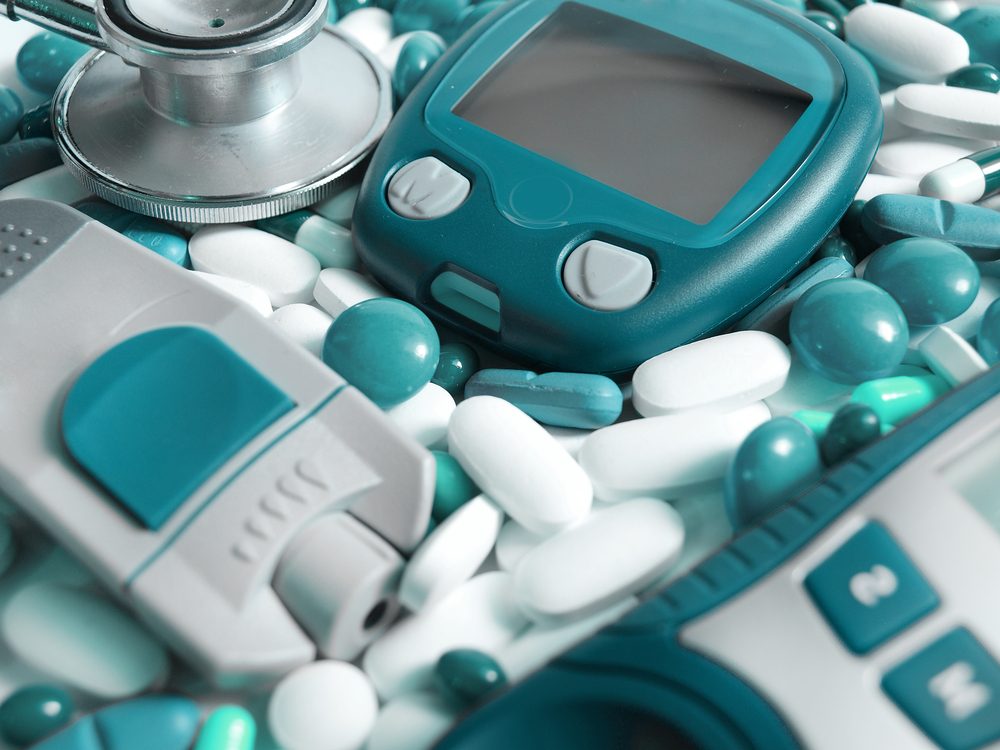Key points
- Covid-19 dealt a blow to the medical-device industry, causing delays in medical visits for non-Covid patients, an exodus of medical personnel, and a decline in the older population who are the highest users of health care.
- Macro factors such as inflation, supply-chain constraints and foreign exchange were also headwinds.
- With Covid-19 winding down, the health-care industry has restaffed to pre-pandemic levels, improving the capacity to accommodate pent-up demand for the procedures from patients.
- Idiosyncratic factors and new technologies offer attractive value propositions within the industry.
It is no secret that Covid-19 caused great upheaval in the health-care industry, and the medical-device industry in particular. The prioritisation of Covid-19 patients—coupled with rigorous safety protocols and resource allocation measures to ensure supply of necessary products—led to significantly lower capacity for elective and non-urgent procedures. At the same time, would-be patients simply stayed home; they did not get knees or hips replaced, or cataracts removed, and even mild chest pain went untreated.
Not that doctor’s offices and hospitals could have performed these non-critical procedures at rates anywhere near the volume pre Covid-19. Estimates show that one in five health-care workers—physicians, nurse practitioners, physician assistants and other clinicians—left work due to stress, burnout or retirement. In addition, there were more than one million deaths from Covid-19 in the US and over two million in Europe. The deceased tended to be older, high-demand patients with pre-existing conditions, the cohort who are the largest users of health care.
Furthermore, since 2020, macroeconomic headwinds have inhibited growth. The first was the strength of the US dollar in 2021 and 2022, which materially affected US-based companies that derive revenue in international markets. Supply-chain challenges also hurt the industry; medical-device manufacturers have had trouble sourcing semiconductors, even as the overall chip shortage has eased, and there has also been a shortage of specialty plastics, metals and resins needed to make the devices. Finally, inflation has meant rising input costs and margin compression.
Now the good news
The medical device industry’s attempt to recover from the pandemic-related slump has been met with setbacks — from virus variants that curtailed procedure volumes to economic pressures that curbed growth. It now appears that a more comprehensive recovery finally may be underway.
Hospital activity has shown signs of improvement that we believe will endure. The rise in inflation combined with a “return to normal” has prompted many health-care workers to return to work. Estimates suggest that US health-care employment is now above pre-pandemic levels. Hospital employment remains just below pre-Covid highs but is improving. The staffing data suggest hospitals now are equipped to perform more procedures than in 2022. For a full recovery, medical-device manufacturers also need to be able to get medical devices to hospitals at a reasonable cost, and there are signs that situation is improving as well.
Broader macro headwinds around labour/raw materials inflation, supply-chain disruptions and unfavourable foreign-exchange fluctuations still appear to be moving in the right direction. We remain encouraged that a moderating inflationary environment could be a positive for margins versus expectations, and many companies are likely to have taken a conservative approach towards inflation in setting initial 2023 guidance.
With Covid in the rear-view mirror and hospitals restaffing, there is pent-up demand from patients for many procedures. Not only are people starting to go back to the doctor, but the acuity of their untreated diseases is worse. For example, doctors are having to use more stents per procedure to push back plaque deposits inside of a coronary artery to treat heart disease. Anecdotally, we detect optimism in our contact with medical-device salespeople.
Pockets of value in medical devices
Atrial fibrillation
Atrial fibrillation is a condition that causes an irregular heart rate (arrhythmia) that can lead to blood clots, elevating the risk for stroke, heart attack and other heart problems. Atrial fibrillation affects an estimated 8-10 million Americans and more Europeans; treatment is a large market. There are different approaches depending on severity. Blood thinners can be used for patients with milder symptoms. For more serious symptoms, the most common technique has been cardiac ablation, which creates small burns or freezes in order to cause some scarring on the inside of the heart to help break up the electrical signals that cause arrhythmia. Unfortunately, cardiac ablation can deaden necessary tissue on oesophageal walls or parts of the heart that the patient does not want to deaden. Furthermore, the success rate is only 50%, so many patients have to undergo additional treatment.
Pulsed field ablation (PFA) is a new technique that is much more precise, with rates of success in the range of 70-80%, and with fewer side effects than cardiac ablation. PFA is a non-thermal, catheter-free technique that delivers high-intensity electric fields through specialised electrodes to create localised electrical fields in the targeted tissue. These electric fields disrupt abnormal electrical signals without generating heat, providing a safer alternative to traditional ablation methods. Safety levels are near 100%. We also think the PFA product could cut the procedure time down by 35%, which could allow for doctors to perform more procedures per week, potentially adding to the size of the market. Given the better safety, we also think the market size could be bigger as patients and doctors reassess the risk/reward of getting ablation done in the first place.
The first company in this group that we find attractive is a mid-sized US-based firm that as yet is deriving modest revenue from the space. We believe the company can earn the new-product premium and can capture a larger share of the approximately $8 billion market. The other company is a larger player in the field which has a share of the older cardiac ablation technology, but we believe that it will be a net winner as it rolls out PFA.
Blood pressure procedure
We also like a company that has a new procedure to lower blood pressure. There are about 50 million people in the US who take blood pressure medication. High blood pressure, or hypertension, is a condition where the force of blood against artery walls is consistently too high. It can lead to various health outcomes, including heart disease, stroke, kidney damage, and other complications. About 10 million of these patients have drug-resistant hypertension. Enter renal denervation—a new procedure that is safe, efficient and quick. A catheter is used to deliver radio frequency energy to disrupt the nerves in the renal arteries which can reduce the overactive nerve signals that contribute to high blood pressure. Renal denervation can potentially help lower blood pressure and improve cardiovascular outcomes for millions of patients. There is currently no market for this procedure, and we believe the company has a favourable reward/risk profile.
Diabetes/weight loss drugs
One of the biggest recent breakthroughs is a prescription medication designed to treat type 2 diabetes and which can also help with weight loss. It belongs to the class of drugs called GLP 1 receptor agonists, which are designed to lower blood sugar levels by increasing insulin secretion and thereby reducing appetite and slowing down gastric emptying. These drugs are typically administered once a week via subcutaneous injection. One way to capitalise on their potential is to own the drug companies that produce this class of drugs. We believe another approach is to own ancillary companies that can benefit from the rising demand for this class of medication. We are optimistic on a company that develops and manufactures components of the “smart pen” that is used with many of these drugs. As prescriptions rise, we believe this medical-device company will be able to sell more components, driving revenue and earnings gains as a result.
Favourable outlook
We believe that the medical-device industry is poised for a rebound from its pandemic-related slump and that there are both macro and idiosyncratic reasons to own stocks in the sector. Relative to most other industries, revenues are growing extra-normally and upward earnings revisions are likely to follow. Notable, the large heath-care providers are projecting increasing demand for their services, which should improve demand for medical devices. We also believe that many ‘would-be’ patients who put off care during the pandemic are now showing up at clinics with more acute disease than they would have otherwise had. This means each patient, on average, is likely be a ‘bigger ticket’ to the provider and the device companies. We also think capacity at health-care providers is starting to improve as they have started to find solutions for the outmigration of nursing and ancillary staff during the pandemic. Again, this is good news for the medical-device manufacturers. Given inflation, we also think the device manufacturers are seeing some pricing relief relative to history. All in, we expect a sustained period of strong trends for this industry, both on a macro and idiosyncratic level, while valuations remain attractive.
This is a financial promotion. These opinions should not be construed as investment or other advice and are subject to change. This material is for information purposes only. This material is for professional investors only. Any reference to a specific security, country or sector should not be construed as a recommendation to buy or sell investments in those securities, countries or sectors. Please note that holdings and positioning are subject to change without notice.






Comments